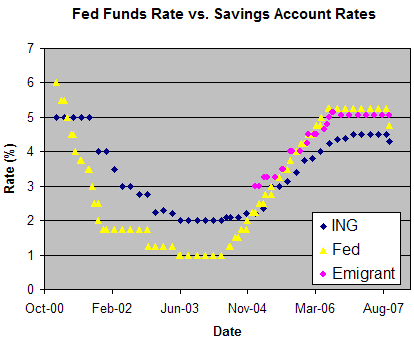I’m probably way behind the times, but I’m impressed by how many full episodes of TV shows are free online now. I had completely missed the first episode of the new season of Beauty and the Geek (a horrible show that I’m ashamed to admit I watch, but I do 😛 ), but then today I just stumbled upon it online. Sure there are commercials, but I can just switch windows and surf websites until they pass. Not all shows are available, but a lot of the ones I hear about most are:
CW – Beauty and the Geek, Gossip Girl
ABC – Grey’s Anatomy, Desperate Housewives, Lost
CBS – CSI, Survivor
NBC – Heroes, My Name Is Earl
TLC/Discovery/Animal Planet – LA Ink, Dirty Jobs
 Right now, if you visit the
Right now, if you visit the 
 She grew up in a working-class household near Detroit, with divorced parents who argued about unpaid bills. At 14 years old, she had to ask her mom to buy an $8 domain name for her. Today, at 17, she owns her own 2-story house and is head of a company that earned over $1 million in revenue in 2006, with even more projected for 2007.
She grew up in a working-class household near Detroit, with divorced parents who argued about unpaid bills. At 14 years old, she had to ask her mom to buy an $8 domain name for her. Today, at 17, she owns her own 2-story house and is head of a company that earned over $1 million in revenue in 2006, with even more projected for 2007.  Estimated cost: $2,000
Estimated cost: $2,000 Estimated cost: $4,000-5,000
Estimated cost: $4,000-5,000 Estimated cost: $4,000-5,000
Estimated cost: $4,000-5,000 The Best Credit Card Bonus Offers – March 2024
The Best Credit Card Bonus Offers – March 2024 Big List of Free Stocks from Brokerage Apps
Big List of Free Stocks from Brokerage Apps Best Interest Rates on Cash - March 2024
Best Interest Rates on Cash - March 2024 Free Credit Scores x 3 + Free Credit Monitoring
Free Credit Scores x 3 + Free Credit Monitoring Best No Fee 0% APR Balance Transfer Offers
Best No Fee 0% APR Balance Transfer Offers Little-Known Cellular Data Plans That Can Save Big Money
Little-Known Cellular Data Plans That Can Save Big Money How To Haggle Your Cable or Direct TV Bill
How To Haggle Your Cable or Direct TV Bill Big List of Free Consumer Data Reports (Credit, Rent, Work)
Big List of Free Consumer Data Reports (Credit, Rent, Work)